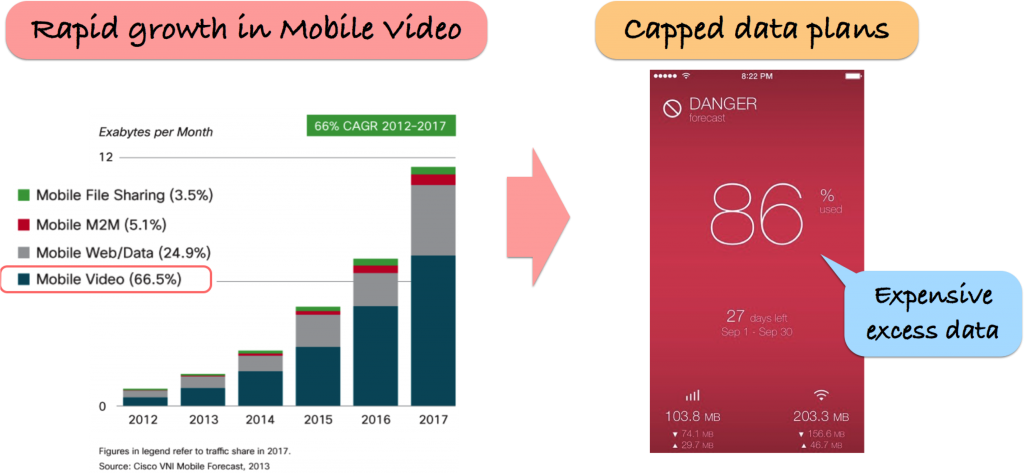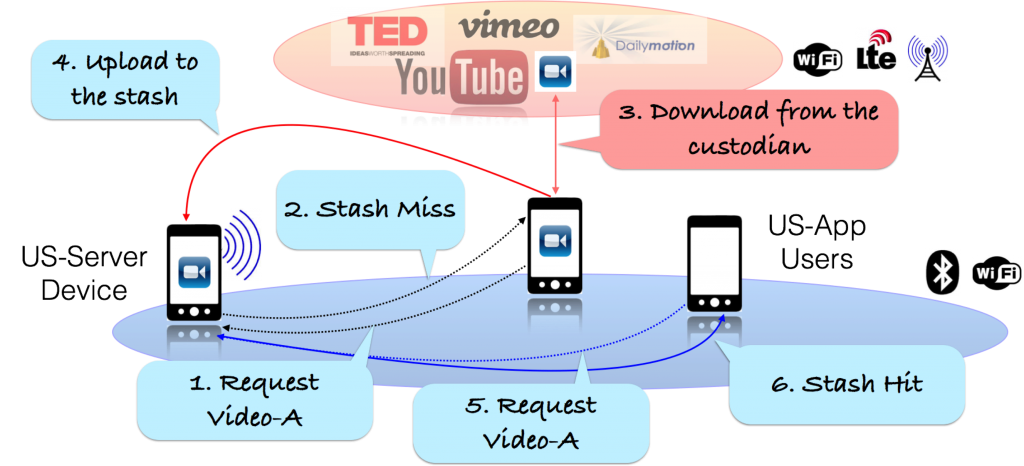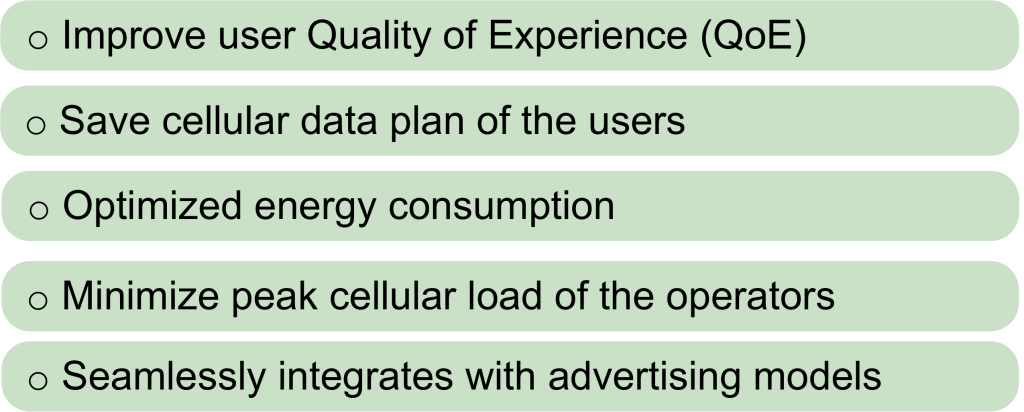User-stash
The emergence of smart mobile devices have led to an explosion in mobile data traffic. This traffic is being generated by the user consuming rich media, especially video via the over the top services such as catch-up TV and YouTube. It has been reported that the current cellular network operators are struggling to cope with the increasing demand and as a result, today a majority of cellular operators only provide capped data plans.
Possible Solutions
- Increase the Bandwidth (Data cap)
- Cost more money ($$$)
- Lower the quality of video
- Lower the users’ QoE
- Pre-fetching/intelligent scheduling
- Not accurate enough
Our Approach
Use the crowd to “stash” the content they download, in a local “stash”.
- Exploit the capability of new mobile devices
- Multiple Networks
- Wifi Direct
- Rich Communication Services
- Storage Capacity and Processing Power
- Multiple Networks
- Content Consumption Characteristics
- Spatio-temporal coherence
- Passengers on the bus
- Hotel Lobbies
- Food Courts
- Spatio-temporal coherence
Users access the User-Stash system via an application, US-app, on their devices. The US-app enables users to access web content via the cellular network and via the US-LAN when available. The US-server is provided by either another mobile device or a dedicated device, acting as a local server. The US-server also acts as an access point for the US-LAN. Access to the US-LAN is granted securely through the US-app using standard WiFi authentication, e.g., WPA. When a user attempts to access content, the US-app connects to the US- server via the US-LAN. If the content is available on the local US-server, the content is served from the US-server. If not, the US-app connects to the cellular network and downloads the content. Once the content is downloaded and consumed, the US-app pushes the newly downloaded content to the US- server, when the US-app reconnects with the US-server. The US-server makes a local decision as to whether it is useful or not to update its cache with the newly pushed content using a content replacement strategy. The operations of the User-Stash system are schematically shown in the following Figure.
Results
Result 1 illustrates the effects of travel time of bus commuters which is determined by the log-no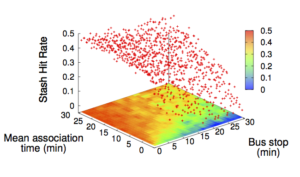 rmally distributed association time with US- server and the duration between two consecutive bus stops. User-Stash achieves higher stash hit rate for short distance bus rides, where there is frequent arrival of new commuters. In addition, mean association time is the deceive factor as the stash hit rate does not vary significantly with the bus stop length for a given association time. Therefore, User-Stash performs better in metro type transport scenarios similar to our application scenario. Overall, the heat map depicts that for the majority of the cases stash hit rate after one hour reaches more than 30% even for 10GB stash.
rmally distributed association time with US- server and the duration between two consecutive bus stops. User-Stash achieves higher stash hit rate for short distance bus rides, where there is frequent arrival of new commuters. In addition, mean association time is the deceive factor as the stash hit rate does not vary significantly with the bus stop length for a given association time. Therefore, User-Stash performs better in metro type transport scenarios similar to our application scenario. Overall, the heat map depicts that for the majority of the cases stash hit rate after one hour reaches more than 30% even for 10GB stash.
For a US-app user, the amount of saving from the monthly data cap would be one of the primary objectives to use the US- app. Therefore, we evaluate the cellular bandwidth saving for individual users during a bus ride. Since US-server starts empty at time=0, the passengers during first hour would be the users that receive lowest be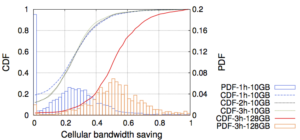 nefit. In the first hour, nearly 19% of the users does not save any bandwidth as shown in Result 2, while that reduces to approximately 11% for the passengers that get onboard in the third hour. Result 2 also illustrates that there are only 2% of passengers with zero bandwidth saving benefits for 128GB stash and the mean bandwidth saving is shifted to 40-60%. Moreover, 80% of users save more than 40% of cellular bandwidth.
nefit. In the first hour, nearly 19% of the users does not save any bandwidth as shown in Result 2, while that reduces to approximately 11% for the passengers that get onboard in the third hour. Result 2 also illustrates that there are only 2% of passengers with zero bandwidth saving benefits for 128GB stash and the mean bandwidth saving is shifted to 40-60%. Moreover, 80% of users save more than 40% of cellular bandwidth.

